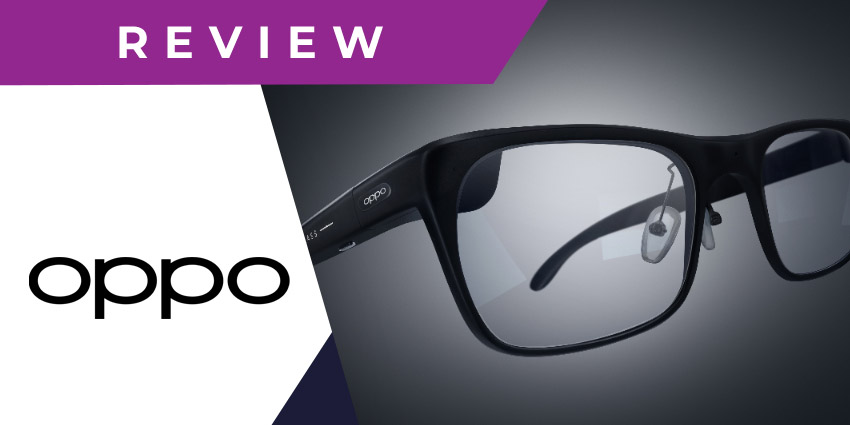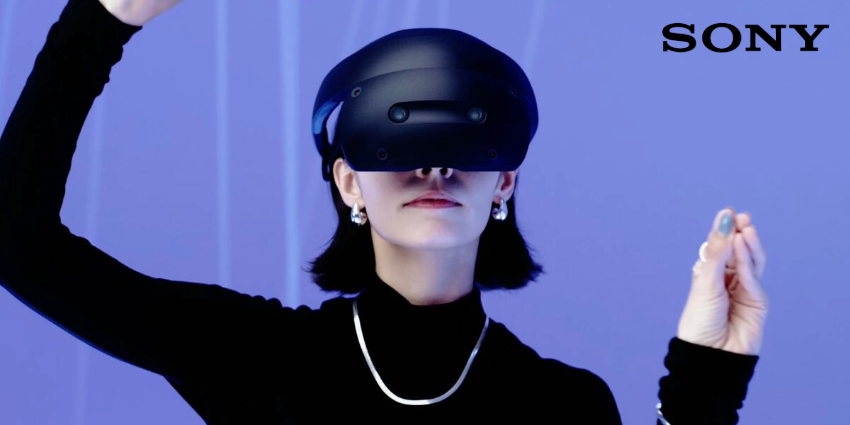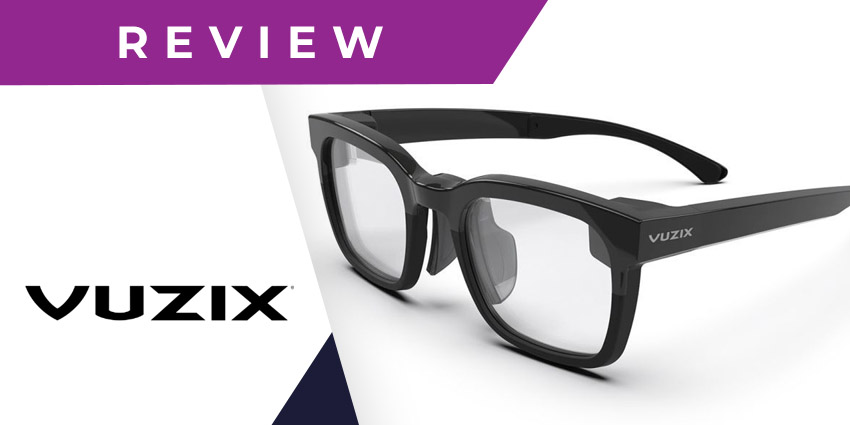The OPPO Air Glass 3 smart glasses, introduced at MWC 2024, are poised to take the XR world by storm. Leveraging proprietary AI technology and augmented reality capabilities, the lightweight specs aren’t yet available to purchase. However, they’re already grabbing the attention of numerous technology enthusiasts.
Though we don’t know much about the visual quality of the full-color display, we do know that OPPO has gone above and beyond with its AI technology. It’s not just giving users access to solutions like OpenAI and ChatGPT. The company has worked hand-in-hand with Qualcomm to create a set of glasses with truly incredible, multimodal AI capabilities.
We took a closer look at the prototype introduced at MWC 2024 to give you a behind-the-scenes insight into what these glasses can do.
OPPO Air Glass 3 Smart Glasses: An Overview
The OPPO Air Glass 3 specs are a set of intuitive smart glasses that combine cutting-edge artificial intelligence with augmented reality capabilities. Although OPPO is heavily focused on highlighting the unique AI capabilities of its glasses, it’s worth noting these glasses aren’t just a tool for accessing an AI assistant on the move, like Meta’s Ray-Bans.
You do get an immersive display where you can interact with 3D content. In fact, there’s even a touch panel on the right side of the device that allows you to scroll between windows and applications. However, these aren’t “standalone” wireless specs. You do need to keep them connected to another device at all times (such as your smartphone), as there’s no built-in processor.
Since the glasses still aren’t available to purchase (yet), we don’t have a full technical specifications list to share. However, we do know that these glasses feature a lot of impressive technology, such as:
- Self-developed resin waveguides
- Brightness levels of up to 1,000 nits
- Integrated AI technology
- Four microphones
- Open acoustic design speakers
- Up to 4K resolution content streaming
The OPPO Air Glass 3 Specs: Design and Comfort
For years, many companies experimenting with smart glasses have struggled to create a pair of high-performance specs that actually look and feel like a standard pair of eyeglasses. Meta created some of the most stylish, lightweight glasses around when they introduced the Meta Ray-Ban specs.
However, the Ray-Ban specs obviously lack the advanced augmented reality capabilities of some bulkier alternatives, like XReal’s glasses. OPPO has managed to create an extremely lightweight, and somewhat stylish pair of glasses with the Air Glass 3. These specs actually look very similar to the Ray-Bans at a glance, and they only weigh 50 grams.
The downside is that they don’t include a computing system for wireless use, which means you’re going to need to keep them connected to your smartphone at all times. If you can get past the annoying fact that you’ll have a wire running down your face while using these glasses, however, they are very comfortable.
Plus, the fact that these glasses aren’t “wireless” could be a good thing from a battery life perspective. According to reviewers, the specs can only work for about 30 minutes on their own. If you connect the glasses to a device, however, you should be able to use them for as long as the battery on your phone lasts. However, at this point, we don’t know how much these glasses will actually drain your phone’s battery life.
Everything about these glasses feels intuitive, however. The touch sensor controls make it easy to navigate through apps without having to constantly use your smartphone. Plus, you can also control the content experience by speaking to the integrated AI assistant. All you need to do is tap a button on your temple, and you can ask the assistant to make a call, translate content, and more.
The Visual and Audio Experience
OPPO hasn’t shared what kind of “resolution” users can expect from the Air Glass 3 specs yet. However, we do know that the glasses have powerful displays in each of the lenses. The company has developed a proprietary resin waveguide to deliver a full-color heads-up display experience, with a refraction index of around 1.70.
The display also has a brightness uniformity of over 50%, and a peak brightness of more than 1,000 nits. Plus, it’s worth noting that the content will only be visible to you.
No-one will see an illuminated patch on your glasses when you’re viewing content, so if you’re worried about privacy, OPPO has you covered. What really adds to the overall visual experience of these glasses, however, is OPPO’s unique AI technology.
OPPO joined forces with a motion vision sensor startup (AlpsenTek), and Qualcomm to create a pioneering new “AI motion algorithm”. This solution can de-blur images and enhance frame rates in real time, enhancing the quality of your experience instantly.
App developers can even use the technology for precise moving object alignment. This ensures creators can design truly immersive content that blends naturally with the real world.
From an audio perspective, we don’t have many insights, based on the prototype available. Like most smart glasses, the Air Glass 3 specs don’t have the best speakers out there. They lack a little volume, and don’t have much depth.
However, OPPO has said that it’s leveraging state-of-the-art technology to improve audio experiences. For instance, the glasses feature “reverse sound field technology” to help minimize sound leakage and keep calls private. That’s great for anyone planning to use their glasses for immersive collaboration.
Plus, the glasses feature four microphones – which OPPO says will help them to capture the user’s voice more clearly during phone calls and meetings.
OPPO’s AI Technology
As mentioned above, the AI capabilities built into the OPPO Air Glass 3 specs are a big part of what makes these wearables really stand out in the XR space. OPPO has been investing in artificial intelligence for a while now.
By December 2023, OPPO had filed over 3,160 global patents related to AI technology. By February 2024, the company had created its “OPPO AI Center” – a hub designed to focus its resources on creating cutting-edge intelligent experiences.
The OPPO Air Glass 3 specs come with a self-trained generative AI model (AndesGPT) built-in. OPPO says this assistant can enhance dialogue, personalize content, and even support navigation. Thanks to the multimodal nature of the assistant, it can understand various different data types, such as images, text, video, and audio.
Users will be able to use the glasses to translate the text they see instantly into any language, ask questions about what they’re seeing, and even get directions to local attractions or spaces. The only downside is that right now, AndesGPT isn’t available to users outside of China due to certain regulations. However, OPPO is partnering with innovators to address this issue.
For instance, the company is working with Microsoft to enable access to Copilot on its devices. This means you should be able to experiment with a multimodal AI assistant anywhere in the world when the glasses are released. However, your overall experience may vary depending on where you are.
The OPPO Air 3 Glasses: Outlook
Compared to some of the other AI and AR glasses we’ve reviewed in the past, the OPPO Air 3 glasses definitely stand out. They’re lightweight and comfortable and manage to pack plenty of cutting-edge AI and extended reality technology into a small design.
However, there are some issues with these glasses too. The fact that you need to keep them connected to a smartphone or device at all times will be problematic for some users. Plus, although interacting with content using the glasses is straightforward, thanks to the touch controls and the integrated AI assistant, we would have liked to see more intuitive input options.
For instance, Meta’s Orion glasses come with a wristband that helps the system to track your movements, allowing you to interact with content by moving your fingers.
The other major downside is that we don’t know when these glasses will be available – or even whether they’re going to roll out to global consumers. Other Air glasses haven’t made it out of China in the past, and the Air Glass 3 specs are still just a “prototype”.
That being said, the OPPO glasses are some of the most comfortable, intuitive, and “user-friendly” specs we’ve seen so far. We do think they have a lot of potential if OPPO finds a way to distribute them to users on a global scale.







